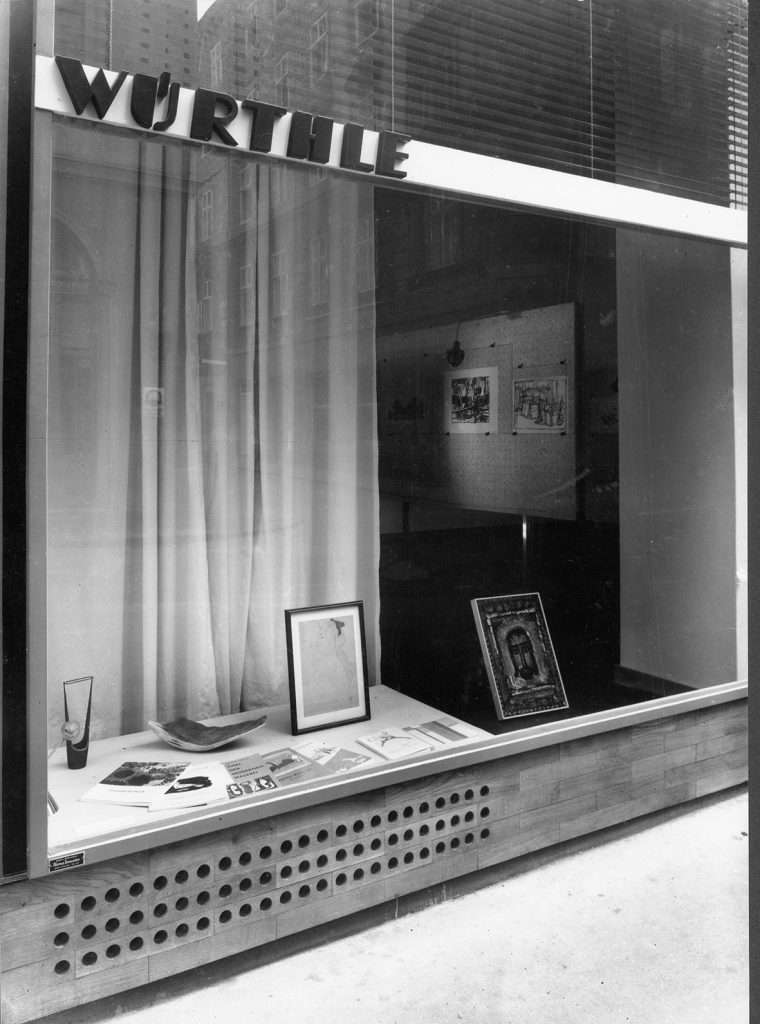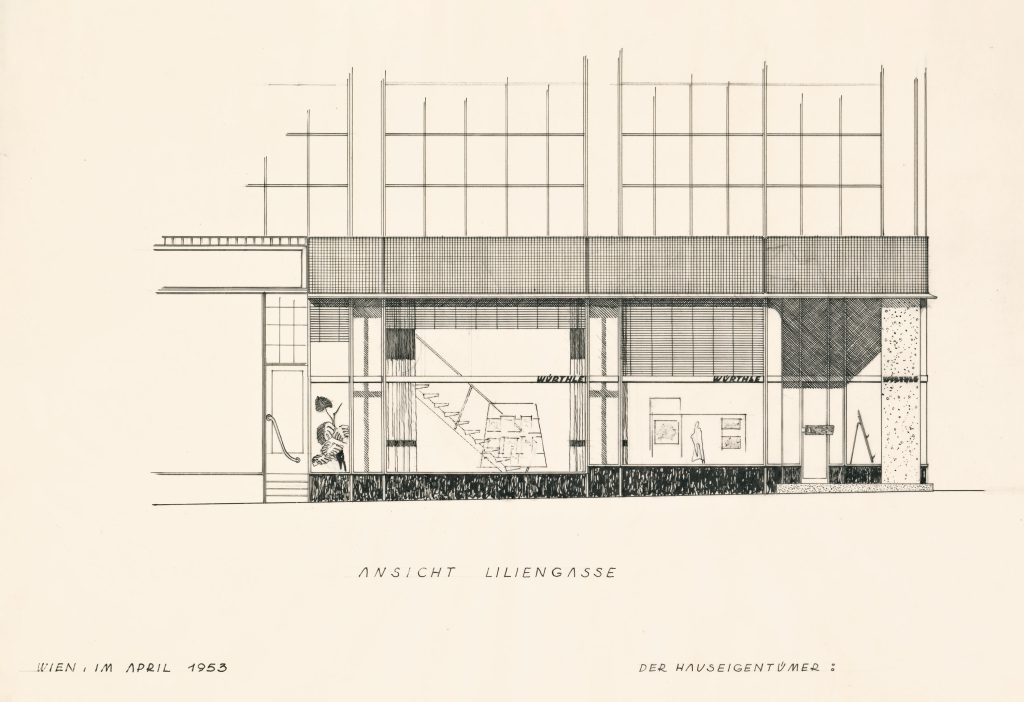
Carl Auböck, Ferdinand Kitt, conversion of Galerie Würthle, view of the window with lettering, Weihburggasse/Liliengasse, 1010 Vienna, 1953
© Architekturzentrum Wien, Collection

The exhibition ‘From Tableware to Prefabricated Housing: the Architect and Designer Carl Auböck (1924-1993)’, at the Az W is dedicated to Ferdinand Kitt’s famous partner, so with this Highlight we now want to bring Kitt himself into the spotlight. Born in Vienna in 1919, he graduated in architecture from the TH Vienna in 1948. During his studies, he began a loose collaboration with Auböck that resulted in several interior designs and culminated in 1953 with the renovation of the Würthle Gallery in Vienna’s city centre. At that time, the gallery had already experienced success, expulsion and violence: Its former owner, the art collector Lea Bondi (1880-1969), had been forced to emigrate to London with the begin of the Nazi regime. The gallery was “aryanised” by Friedrich Welz — who also wrested the famous painting Wally by Egon Schiele from Bondi, which she had acquired in the mid-1920s. 1)
When the commission for its remodelling was awarded to the Auböck/Kitt studio in Taubstummengasse, the sculptor Fritz Wotruba had already taken over the management of the gallery. The aim was to visually extend the exhibition space to the street through generous glazing, and to incorporate the shop windows into the exhibitions. The display windows are accentuated horizontally by a narrow band running around them that bears the gallery’s name several times on both street frontages. All partition walls in the interior were removed to create a large space with an elegant, airy staircase to the upper floor — an element frequently encountered in Kitt’s buildings.
Following the end of the office partnership with Carl Auböck, Ferdinand Kitt worked as the in-house architect for the Austrian Saurerwerke from 1956 to 1960, where he was responsible for numerous industrial buildings. Today, Kitt is rarely mentioned in any publications on Austrian architecture of the 20th century, while he was certainly one of the “pioneers of modern shop design” in Austria, according to contemporary architect Karl Mang.
In his role as Vice President of the Zentralvereinigung der Architekten Österreichs (central association of Austrian architects) for decades, Ferdinand Kitt, who was described as very sociable, was able — together with Eugen Wörle as President — to bring about an opening of the ZV to new developments and ideas, which was also reflected in more progressive themes and the presentation of international architecture in ‘Bau’, the association’s journal. His early death in 1973, at the age of only 54, was probably a significant factor behind his undeserved obscurity today.
1) Until her death in 1969 Bondi endeavoured unsuccessfully to have the painting returned to her. Its provenance as a stolen artwork was established in an exhibition at MoMA in 1998, although an out-of-court settlement with her heirs was not reached until 41 years after her death.
